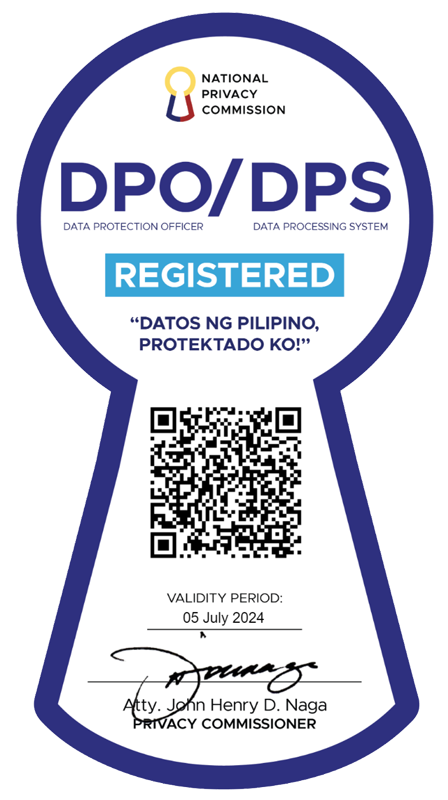Public health workers show enthusiasm for wireless documentation system
A midwife for more than 30 years in the municipality of Gerona in Tarlac, Fermina Flores did not imagine that her regular rounds among barangay health units would be augmented by a handheld device. For years, Ate Mina, as she prefers to be called, had gone from unit to unit, writing down prenatal check-ups, family planning motivation sessions, postpartum visits, and tuberculosis case findings. But in 2009, Gerona became one of the 37 local government units and rural clinics, mostly in Tarlac Province, that became the pilot testing area for the Wireless Access for Health (WAH) program. Under the program, Ate Mina and her fellow health workers were equipped either with a laptop or tablet in which they entered the data collected. The new system is such that other health units that are connected to the system can view the information in real time. In a news briefing on Tuesday, the 60 year-old Ate Mina said that learning how to use a computer and a tablet had been the greatest stumbling block she had to overcome during the transition to a paperless system. She initially hesitated to drop her day-to-day paper work for the tablet and the program that collects, and automatically collates data. “Hindi ko po alam na kayang kong mag-aral ng computer kung gugustuhin po pala, kayang matuto kahit matanda na,” the midwife said. After more than three years of experience with the WAH system, Ate Mina shared that she was glad to have undergone the transition. “Sa araw-araw po na ginagawa namin… nag-eencode po kami araw-araw pero ngayon direkta na po.” The WAH program has documented about 220,000 patient records and 250,000 public consultations since testing started in 2009. And apart from portability and the immediate update in the health database, the program runs a feature that alerts Ate Mina’s patients for their check-up through short message service (SMS). Benefits of the program With the use of the WAH system, Dr. Ricardo Ramos, provincial health officer of Tarlac, said that they had a clearer picture of Tarlac’s health situation given the accurate and timely grassroots data. “[Health information] is very, very necessary,” Ramos said in the sidelines of the media briefing explaining that through culled data, a person’s medical history can be seen with a touch of the fingertips. “In terms of epidemics, nakikita mo [agad] ‘yung incidence,” Ramos added, pointing out that the DOH's data usually takes at least a year to collate. He also noted that redundancy of tasks among health workers was also lessened. “Ang future ng wireless access is to improve logistics development plus personnel management,” Tarlac’s provincial health officer said. He explained that through the system local government units may assess if the health services supplied the needs of it people. Through the program, Ramos also observed that people possessed more “health-seeking behavior” due to the automatically generated SMS advisory. The DOH's platform of choice The WAH platform was collaborated upon by the Department of Heath Region 3, RTI International, Smart Communications, Inc., Tarlac Provincial Health Office, Tarlac State University, United States Agency for International Development, University of the Philippines – Manila, Qualcomm, and Zuellig Family Foundation. According to its organizers, the program will be replicated in the provinces of Ilocos Norte, Ilocos Sur, La Union and Pangasinan. Likewise, the WAH program will be rolled out this year in 12 municipalities of the Autonomous Region in Muslim Mindanao (ARMM) and some parts of Eastern Samar. “We have witnessed the tremendous benefits the WAH project has already brought the people of Tarlac, and we look forward to working without allies here in locos both from the public and private sectors to expand the project to Ilocos Norte, Ilocos Sur, La Union and Pangasinan,” said Dr. Benito Arca, assistant regional director of DOH Ilocos. Despite the enthusiasm shown by Tarlac's health services, the national government may not use the WAH platform because it has its own similar project called the clinic Information System (ClinicSys). ClinicSys is also a technology-driven public health system designed for rural health units but it can only be used through Windows-powered devices. It started in 2002 but it is only operational in 19 RHUs in South Cotabato, Kalinga and Surgao del Norte, according to DOH’s inventory of information systems dated March 2012. http://uhmis1.doh.gov.ph/UnifiedHMIS/images/pdf/ICTProjects_March142012_327pm.pdf ClinicSys is currently being harmonized with other DOH’s information system services. In a text message to GMA News Online, Health Secretary Enrique Ona noted that the DOH “will look into it [the WAH platform].” Political presence through health services With timely and accurate data, local leaders can legislate better policies for the health sector, Zuellig Family Foundation president Ernesto Garilao said during the press briefing. “Based on [accurate information], for mayors, you can come up with timely decisions to improve health… [The platform] has a great potential,” the former Agrarian Reform Secretary noted. Ramos concurred explaining that the platform can be a “very powerful political tool.” “For example, doon sa SMS Alert… it gives a personal touch plus the government is spending [on] technology for them. Parang sinasabi ng mga tao ‘VIP pala ako, pinagkagastusan pala ako,’” he explained. The Tarlac provincial health officer noted that the greatest challenge with the program is its sustainability especially if there is a change of leadership in elected government posts. “If we do away from branding… ego-tripping and ang madalas na change of leadership,” he noted.“[The program] is something that can provide or make a difference if people will just recognize it.” — DVM, GMA News




